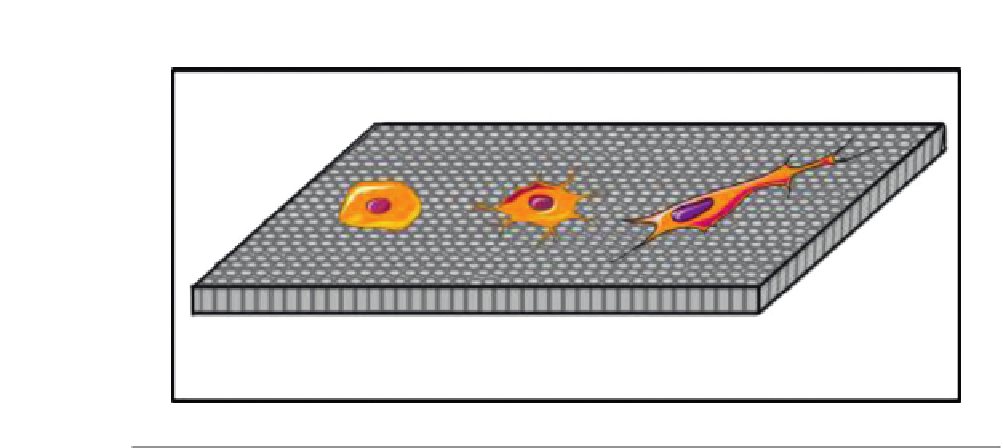Biomedical Engineering Reference
In-Depth Information
Adhesion
Proliferation
Differentiation
Adhesion and stem cell
markers: VCAM, ITG, THY1
Osteoblastic markers:
Runx2, ALP, OCN, OPN
FIGURE 16.5
The adhesion, proliferation, and differentiation of mesenchymal stem cells on nanostructured surfaces.
The adhesion of stem cells is characterized by the expression of cell surface markers (VCAM, ITG, THY1)
while phenotypic markers (Runx2, ALP, OCN, OPN) are specific to their osteoblastic differentiation.
OCN, osteocalcin; OPN, osteopontin.
to bone tissue while they differentiate into fibroblastic lineage in the gingival tissue region. These
two differentiation pathways are in concurrence around dental implants. In some cases, implants
are encapsulated by fibrous tissue due to the proliferation and differentiation of MSCs into fibro-
blastic cells. In response to cytokine, fibroblasts migrate and generate a capsule of collagen, which
is the first step in the generation of gingival tissue or rejection on contact to bone. This fibrous cap-
sule prevents bonding between implant surface and juxtaposed bone and caused implant failure
[56]
. On the other hand, both the differentiation of MSCs into fibroblastic lineage and the fibroblas-
tic adhesion are desired in the gingival upper part of dental implants. Fibroblasts adhesion has been
shown to be lower on nanoscale surface compared to conventional surfaces
[57]
. Moreover,
nanometer-size features have been shown to decrease fibroblast adhesion and proliferation
[58,59]
.
The micro- and nanoscale surface properties of metal implant including chemistry, roughness, and
wettability, could affect bone formation
[60]
. Numerous treatment such as machining, grit blasting,
Ti/HA plasma spray, chemical etching, and anodization are available to modify the implant surface.
Research has specifically demonstrated that nanorough Ti
[61]
and nanostructured Ti can enhance
osteoblast adhesion and differentiation compared to their nanosmooth control
[62]
. Furthermore,
surface with micro- and nanopores has been shown to greatly enhance osseointegration
[63,64]
.
Surface properties may control the steps of adhesion, proliferation, and differentiation of MSCs,
and thus condition tissue integration.
16.5
Tissue integration
Branemark et al.
[65]
described the osseointegration as a direct structural and functional bone to
implant contact under load. As previously discussed, the biological events occurring at the tissue-



